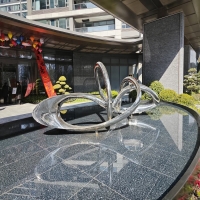Welcome to the website for landscape facilities products and knowledge.
How does the design of a landscape round trash can impact its resistance to damage from prolonged moisture exposure?
The design of a landscape round trash can plays a critical role in its ability to withstand prolonged moisture exposure, a common challenge in outdoor environments. Key design elements such as material selection, structural integrity, and drainage features significantly impact its durability.
1. Material Selection: High-quality, weather-resistant materials like polyethylene, stainless steel, or powder-coated metals are often used. These materials resist rust, corrosion, and degradation caused by moisture, ensuring long-term functionality.
2. Structural Integrity: A seamless or welded design minimizes joints and crevices where water can accumulate, reducing the risk of cracks or leaks. Rounded edges also help prevent water pooling, which can weaken the structure over time.
3. Drainage Features: Many landscape round trash cans incorporate drainage holes at the bottom to allow water to escape, preventing stagnant moisture that could lead to mold, odors, or material breakdown.
4. Protective Coatings: UV-resistant and waterproof coatings add an extra layer of protection, shielding the trash can from rain, humidity, and other moisture-related damage.
5. Ergonomic Lid Design: A snug-fitting or hinged lid prevents water from seeping inside, keeping the contents dry and reducing the risk of internal corrosion.
By prioritizing these design aspects, landscape round trash cans can maintain their functionality and appearance even in wet or humid conditions, making them ideal for parks, streets, and other outdoor spaces.
Related search:

Recommendation
Abstract art sculpture, stainless steel metal sculpture, large-scale water feature sculpture